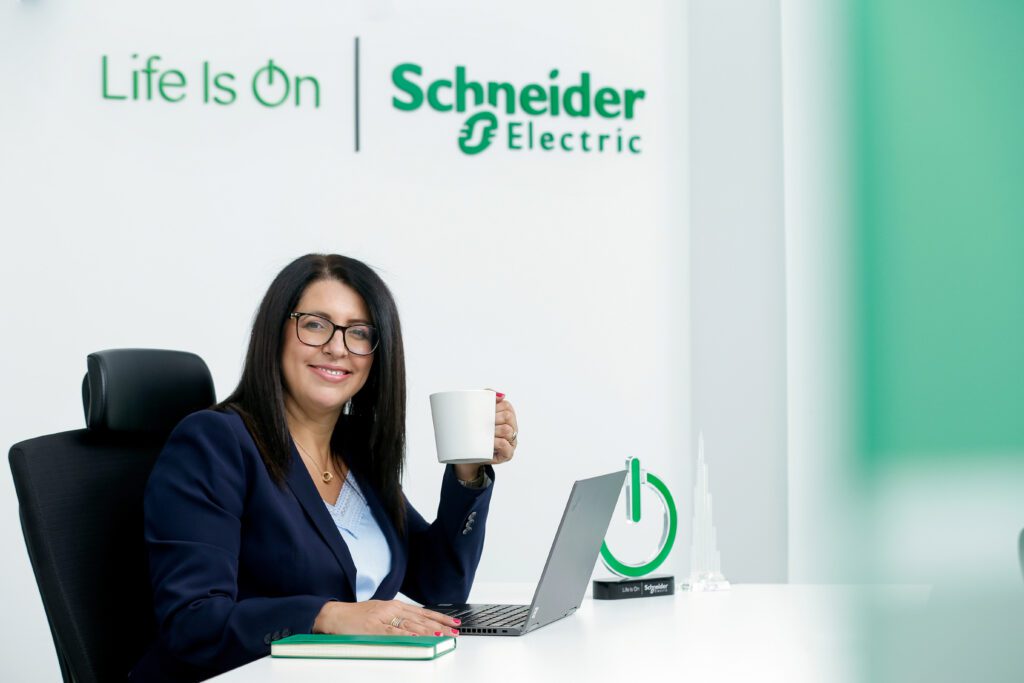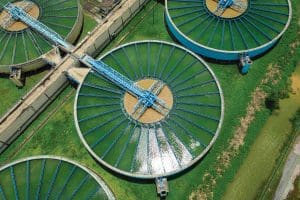The focus on vulnerabilities in office designs and operations has significantly increased after the pandemic. Thus, bringing the best practices in workplace infrastructures has been subject to debate. For example, the concurrent rise in work-from-home policies and remote working lowered the need for expansive offices. Industrial and organizational (I/O) experts deemed these developments as highly important in the era of hybrid work.
By the end of 2023, 39% of global knowledge workers will work hybrid, up from 37% in 2022, according to Gartner(1). However, hybrid work is a tricky balancing act with several moving parts. As office setups can be dynamic with no preset schedule, facilitating a conducive working environment can be complex. Additionally, there are expectations for companies to instill confidence in employees and incentivize their returns. Meanwhile, buildings have come under scrutiny for consuming about 30% of the world’s energy and accounting for almost 40% of annual carbon emissions. Such factors are now dominant in mainstream corporate culture, which are set to define business outcomes significantly.

Under that scenario, piecemeal strategies to achieve individual objectives could potentially lead to negative employee experiences, including operational disruptions and extended downtime. Conversely, IoT-AI solutions constitute a holistic approach to designing and operating a hybrid workplace where well-being is at the core of different amenities and initiatives. The convergence of design and digital technology in workspaces helps operators create a single source of truth for real-time energy, performance, and sustainability data. The integrated visualization sets a benchmark for optimal processes, conserves energy, and delivers disruption-free workflows for employees.
Bridging the efficiency gaps
Facilities with legacy building management systems (BMS) tend to operate in silos, creating blind spots in electro-mechanical processes. By retrofitting these buildings with IoT and AI-based solutions like Schneider’s EcoStruxure, operators can integrate siloed systems and use efficient data-driven decisions. Insights-led operations bridge efficiency gaps, optimize performances, and reduce energy consumption — all adding to savings while enhancing employee experiences. The ability to retrofit and repurpose existing buildings into hybrid workplaces is significant because of rising costs and carbon emissions associated with new construction. Moreover, about 50% of the buildings in existence today will still be in use in 2050(2), further highlighting the need for efficiency at scale.
Building operational resilience
The pandemic was a test of resilience in commercial facilities. Most lacked the technologies to operate remotely or conduct spatial analysis for social distancing. Workplaces that relied heavily on manual operations were disrupted due to labor absenteeism, whereas those with centralized command control could achieve business continuity with “skeleton staff”. Such agility, adaptability, and resilience against unexpected risks are highly desirable going forward, with evolving geopolitical and economic circumstances resulting in supply-chain disruptions, global energy crises, and price fluctuations.
Making workspaces people-centric
One of the key incentives for companies to resume office work is in-person collaborations. This consideration forms the basis for designing hybrid workplaces. AI algorithms can help designers maximize the functionality of a given floor plan and deliver innovative and collaborative environments such as activity-based working (ABW). Such spaces include common areas for socializing and brainstorming, like soundproof workspaces for solitude, which employees can access depending on their needs. Smart sensors and thermostats can be commissioned to automatically adapt based on occupancy levels and preferences, leading to personalized comfort and high productivity. From a business standpoint, these factors translate to reduced absenteeism, better employee retention, and reduced operational costs.
Turning net-zero emissions into a reality
High visibility into energy-intensive systems in workplaces enables operators to predict occupancy levels, adjust loads, and fix excessive resource consumption. After addressing efficiency issues, stakeholders can focus on indirect, scope-3 emissions by holding value-chain vendors to the same standards. At the building level, onsite energy generation and microgrids can be explored and implemented by using solar, wind, or biomass energy. IoT architectures can be seamlessly integrated with microgrids. This reduces building dependence on main grids, enhancing reliability and embracing renewable energy. Ambitious goals such as net-zero 2050 require these enterprise-level transformations.
IntenCity, a Schneider Electric office in Grenoble, France, represents enterprise transformation. Using EcoStruxure, the operations of IntenCity’s 13 sites were consolidated into four. Smart sensors deployment, followed by EcoStruxure’s analysis of 60,000 data points every 10 minutes, enables Schneider to reduce energy usage while ensuring the well-being of 5,000 employees through adaptive comfort, optimal indoor air quality (IAQ), and adequate lighting. Simultaneously, two wind turbines and ample photovoltaic panels generate 970 Megawatt hours of energy per year, enabling Schneider to share surplus power with the city of Grenoble. All in all, IntenCity(3) consumes about ten times less energy than a typical European building while generating a power surplus to its requirements. Truly, this is the trademark of a net-zero office.
IntenCity shows that the future of resilient, sustainable, hyper-efficient, and people-centric workspace is now. Transformations must gather a sense of urgency, as the climate clock is ticking. New projects can incorporate IoT-AI solutions in the design stages and reduce embodied carbon, whereas existing buildings can use retrofits to achieve a net-zero future. While the environmental impact could take longer to manifest, the economic ROI of retrofitting a commercial building is 10 years or less, as per Schneider’s empirical evidence(4). In other words, workplace transformation pays off in many ways.
When business blends with the beach, a case from Egypt’s North Coast
One example of an innovative approach to the new workspace is what one of our customers in Egypt is doing. Paragon Beach Hub is a remote working space located in El Alamein, Egypt. It is basically a beach resort that is designed for remote workers. It offers a variety of amenities including co-working space, phone pods, meeting rooms, inspiring beach spots, a cafe, and even a nursery. Schneider Electric and Paragon have been working closely to make sure that this unique workspace is built on a digital power architecture that is reliable, scalable, and most importantly, sustainable and does not impact the surrounding ecological ecosystem. It is with such innovative approaches and close collaboration; that Paragon has created a unique workspace for people who want to work remotely and still enjoy the beautiful beaches of El Alamein and the laid-back lifestyle of the North Coast of Egypt. You can hear it directly from the CEO of Paragon, Bedeir Rizk in this video.



